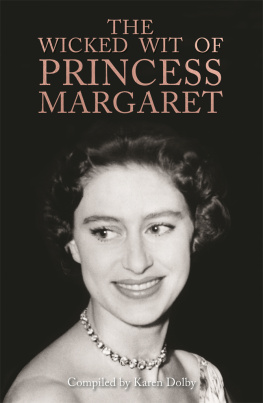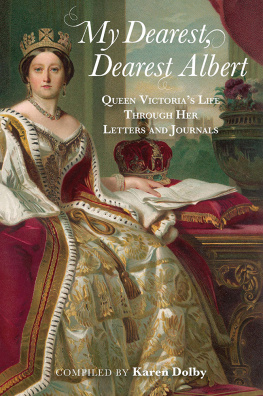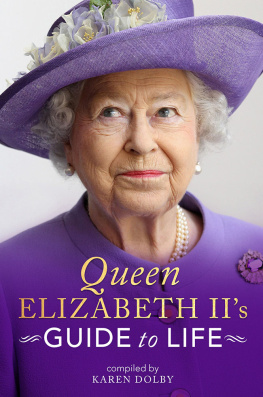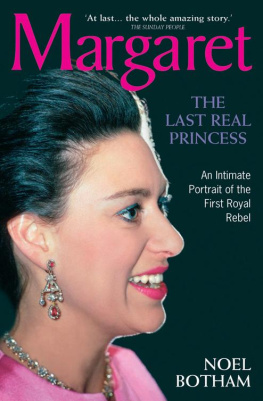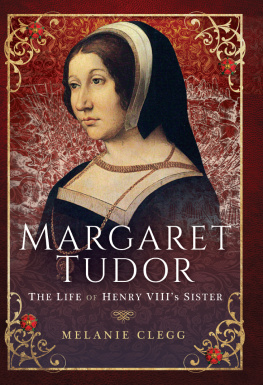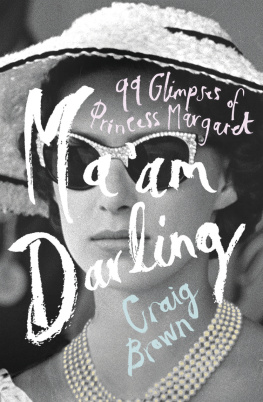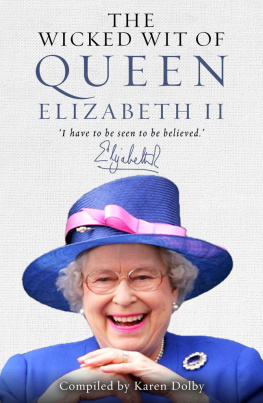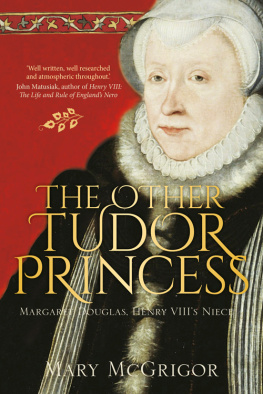OTHER TITLES IN THE SERIES
The Wicked Wit of Winston Churchill
The Wicked Wit of Jane Austen
The Wicked Wit of Charles Dickens
The Wicked Wit of Oscar Wilde
The Wicked Wit of Queen Elizabeth II
The Wicked Wit of Prince Philip
First published in Great Britain in 2018 by
Michael OMara Books Limited
9 Lion Yard
Tremadoc Road
London SW4 7NQ
Copyright Michael OMara Books Limited 2018
All rights reserved. You may not copy, store, distribute, transmit, reproduce or otherwise make available this publication (or any part of it) in any form, or by any means (electronic, digital, optical, mechanical, photocopying, recording or otherwise), without the prior written permission of the publisher. Any person who does any unauthorized act in relation to this publication may be liable to criminal prosecution and civil claims for damages.
A CIP catalogue record for this book is available from the British Library.
ISBN 978-1-78243-958-5 in hardback print format
ISBN 978-1-78243-959-2 in e-book format
www.mombooks.com
Contents


I cannot imagine anything more
wonderful than to be who I am.
I n June 2006, 896 items from Princess Margarets private collection went under the hammer at Christies auction house in London. Highlights included the Poltimore Tiara she wore for her wedding, countless gifts of Faberg, furniture and jewels from her grandmother, Queen Mary, a gold and sapphire cigarette case from her father, King George VI, engraved with: To Margaret from her very devoted Papa GR Christmas 1949. Other works of art: gifts and personal messages, from the simple to the most valuable, from family, friends, the public, organisations and heads of state, were also amongst the collection, which began in the Princesss childhood and archived her whole life. Like Princess Diana, with whom she was often compared, Princess Margaret had lived her life in the spotlight, her every move recorded and documented. She courted controversy and was fted and photographed, praised and vilified, in equal measure.
Watching film footage of Princess Margaret, reading the anecdotes and conflicting accounts of her life, her character remains something of an enigma. Vivacious, charming and witty, she was also sometimes downright rude. A bohemian who was also a stickler for protocol. A snob who mixed widely.
So many contradictions. Its hard to escape the impression that sometimes the Princess behaved badly just because she could; a childhood instinct for naughtiness that never left her. As an adult she was often tempted to see just how far she could go and exactly how much she could get away with.
Bored, underemployed, not sufficiently challenged. Margaret was often let down by so-called friends. Her restless character needed a purpose and a role. When her beloved father died, she was stranded. Not only grieving and bereft, she watched as all around her family members took on new roles and important functions; everyone elses positions changed except for her own.
Writer and man of letters Gore Vidal, who came to know Princess Margaret well, commented, She was far too intelligent for her station in life She often had a bad press, the usual fate of wits in a literal society.
Hers was a strange position. Born fourth in line to the throne, she went up to third at the age of six, when her uncle abdicated, then back down to fourth again in 1948 with the birth of Prince Charles, after which she continued dropping. She was number eleven at the time of her death in 2002.
Unlike her elder sister, Elizabeth, Margarets role was not defined. She had no fixed path and as a result vacillated between duty and inclination. She was drawn to the arts and artists of all sorts, but she was also royalty in a world where the old order was changing. She chose to mix in a society where rank and birth no longer held sway but for someone like the Princess, this was a contradictory mix. She was ever aware of her position and even when most relaxed and uninhibited would sometimes step back and pull rank. Throughout, Princess Margarets life bore witness to the big question that The Guardian posed in its obituary of her what, exactly, is a princess for?
From glamorous style icon to a rather lonely figure; in ill-health and semi-paralysed, living out her days at Kensington Palace, Princess Margaret was always her own woman. Fted by the press in her youth as the beautiful, tragic Princess who sacrificed love for duty, she was equally criticised in her later years for her icy hauteur and difficult demands.
Close friends remember a loyal, fun-loving woman who was frequently misunderstood.
She could be utterly preposterous, rude, demanding and outrageous. She could also be warm, witty and clever. There was no excuse for some of her behaviour but she could never be accused of being boring. And there was something about Princess Margaret that kept friends, enemies and everyone in between, entranced.
This book focuses on her unique wit and sharp view of society and the world, told through her own words and stories from those who knew her best.

1930 | Princess Margaret Rose is born on 21 August 1930 at Glamis Castle in Scotland, to Elizabeth Bowes-Lyon, Duchess of York, and Prince Albert, Duke of York. Her birth is not registered for several days to avoid her being number 13 on the parish register. Her mother initially wants to call her Ann Margaret, but her father dislikes the name Ann. They decide upon Margaret Rose instead. The family live at 145 Piccadilly in London. |
1932 | Her parents make Royal Lodge in Windsor Great Park their country home. |
1936 | King Edward VIII abdicates on 11 December in order to marry divorcee Wallis Simpson. His brother, Margarets father, becomes King George VI and her elder sister Elizabeth becomes heir to the throne. |
1939 | The Second World War is declared on 1 September while the princesses are at Birkhall on the Balmoral estate. They remain here until Christmas, which they spend at Sandringham House, and then move to Windsor Castle where they are to remain for most of the war. Prime Minister Winston Churchill advises the evacuation of both princesses to Canada. The Queen Mother famously replies, The children wont go without me. I wont leave the King. And the King will never leave. |
1940 | On 13 October, Margaret joins her sister to make her first public broadcast on Childrens Hour on BBC radio. |
1944 | Wing Commander Peter Townsend is appointed Equerry to King George VI (he does not become Group Captain until the beginning of 1953). |
1945 | The Second World War ends. Princess Margaret appears on the balcony at Buckingham Palace with her family and Prime Minister Winston Churchill. Later, she and Elizabeth join the celebrating crowds outside the Palace gates. |
Next page
